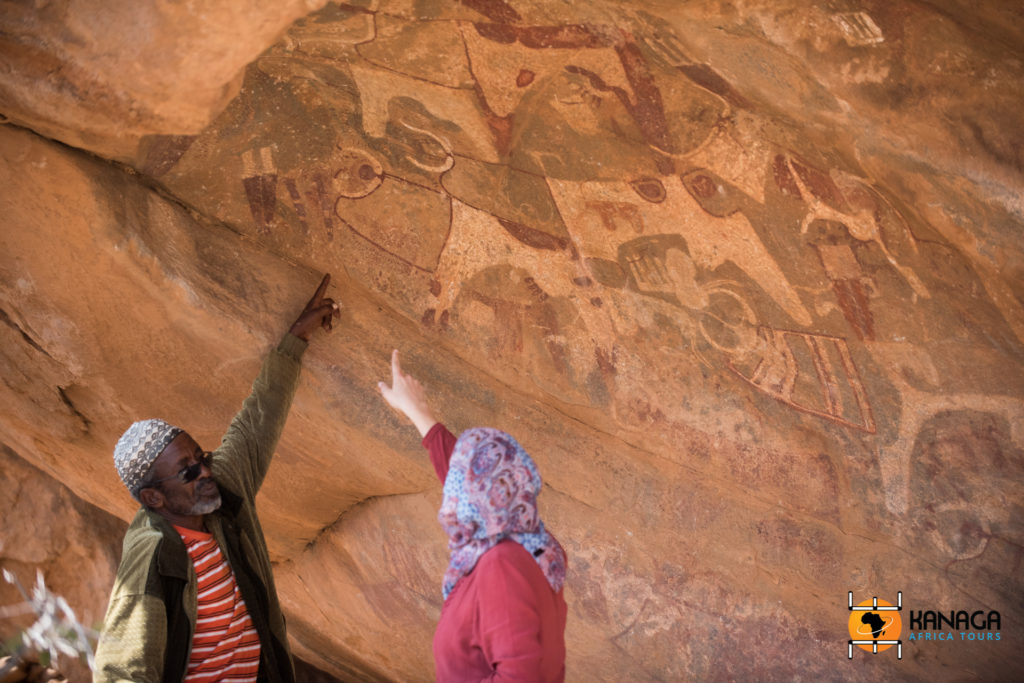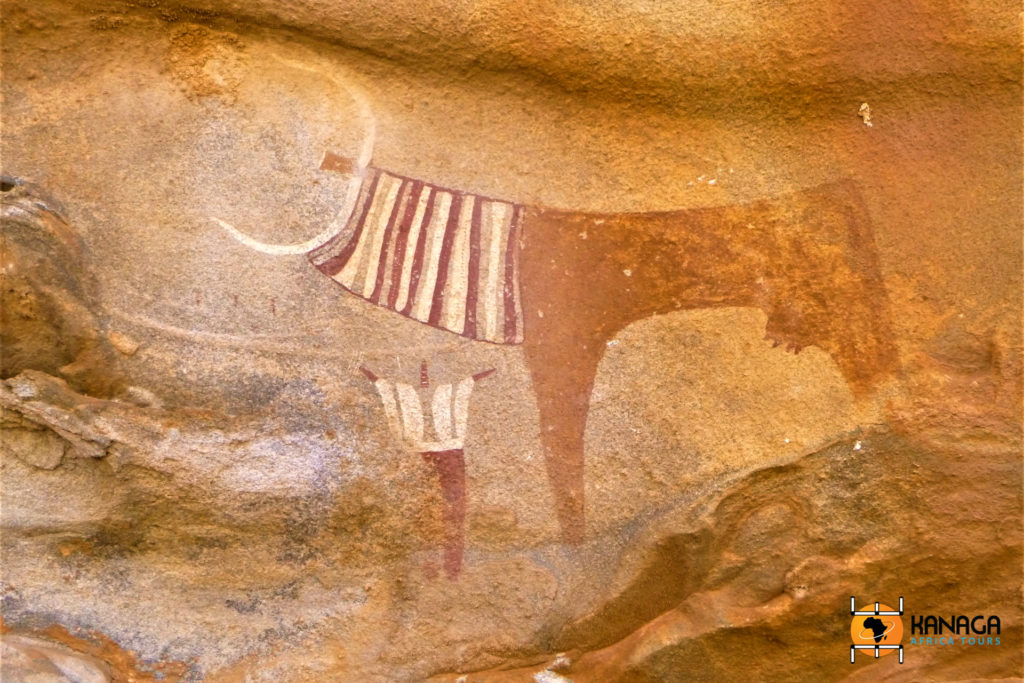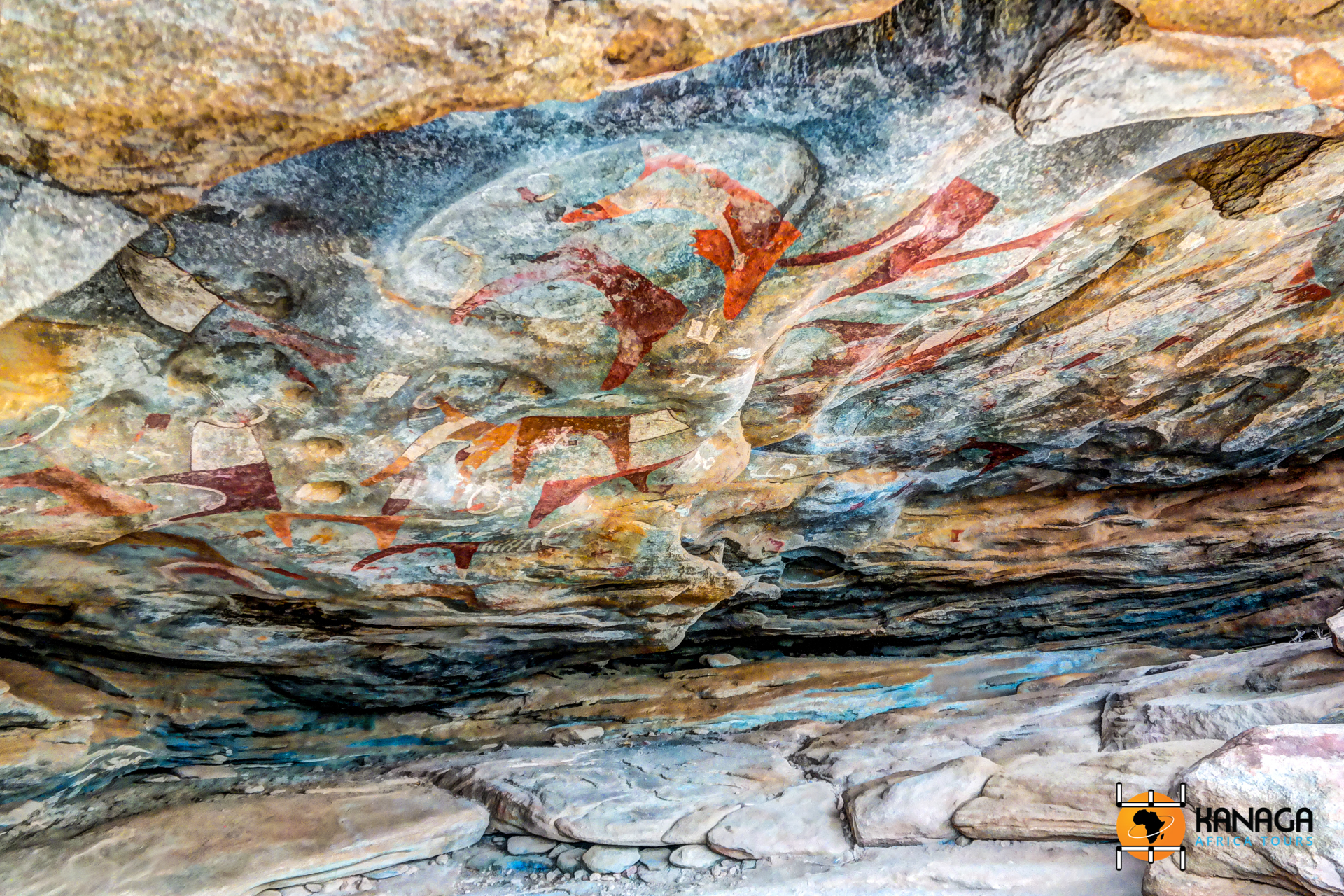It is a true rock jewel, unique in its iconographic style, preservation and dating, but ironically not a UNESCO World Heritage Site, as the state of Somaliland is not recognised by the international community.
Between Hargeisa and Berbera, in a complex of caves, are the Laas Geel paintings, dating back more than 5,000 years and considered the best-preserved prehistoric site in the whole of Africa due to the position of the paintings, which are covered by granite ledges. A series of pastoral scenes, with human and animal figures, painted with white, red, yellow and black natural pigments, are stylised into unique iconographies. Large votive cows with slender white horns, prominent udders (a symbol of fertility and prosperity) and streaked necks, stand above small human figures. Some cattle are also portrayed wearing decorative clothing. In addition to the long-horned cattle, the rock art also shows the image of a domestic dog, several canids and a giraffe. The perfect state of preservation of the paintings demonstrates the sacredness of this place, which is said to be inhabited by spirits, to this day the only effective guardians of this precious treasure.
Although the rock art of Laas Geel has been known to the inhabitants of the area for centuries, its existence only came to international attention after it was discovered in 2002 by a group of French researchers. Not so lucky was the spectacular carving of the giant cow of Daghax Marodi, damaged by vandalism, but still majestic in its size (about 1.5 metres high). Daghax Khoure, a site with beautiful paintings of cows, humans, canids and giraffes, set against a spectacular natural backdrop, is also worth a visit.







